NIL
Razorbacks’ Sam Pittman probably shaking head in agreement with Deion Sanders
FRISCO, Texas — It’s probably more likely than anyone would admit, but Arkansas coach Sam Pittman just might be in complete agreement with Deion. Colorado coach Deion Sanders said Wednesday that college football needs a salary cap to restore competitive balance, warning that unchecked spending and NIL deals are making the sport harder to manage. […]

FRISCO, Texas — It’s probably more likely than anyone would admit, but Arkansas coach Sam Pittman just might be in complete agreement with Deion.
Colorado coach Deion Sanders said Wednesday that college football needs a salary cap to restore competitive balance, warning that unchecked spending and NIL deals are making the sport harder to manage.
Speaking at Big 12 media days, Sanders said the current system, which allows for unregulated player movement and rising salaries through name, image and likeness deals, has left some programs unable to compete for top talent.
“I wish there was a cap,” Sanders said during a coaches’ roundtable. “Like, the top-of-the-line player makes this, and if you’re not that type of guy, you know you’re not going to make that. That’s what the NFL does.
“So the problem is, you got a guy that’s not that darn good, but he could go to another school and they give him a half million dollars. You can’t compete with that. And it don’t make sense.”
“All you gotta do is look at the [CFP] and see what those teams spent, and you’ll understand darn well why they’re in the playoffs.”
Deion Sanders on NIL and the current state of college football. pic.twitter.com/y6A5C3dWUP
— ESPN (@espn) July 9, 2025
Pittman will get his chance to respond at SEC Media Days on Thursday. It’s probably a safe bet that will be one of the biggest questions for every coach.
Having written and talked about Sanders for 35 years since he was in high school, I have agreed with him on a lot. It’s not hard to ignore all of the circus if you just try it.
He makes sense more than some would think. The NCAA and power conferences recently approved a revenue-sharing agreement, known as the House settlement, that allows schools to share up to $20.5 million per year with athletes.
That cap is expected to rise to about $32 million over the next decade. That probably wouldn’t be enough because schools have pretty much shown they will find a way to spend it.
Sanders said the changes are not enough to level the playing field.
“You understand darn near why they’re in the playoffs,” Sanders said, referring to the College Football Playoff. “It’s kind of hard to compete with somebody who’s giving $25-30 million to a freshman class. It’s crazy.”
Top programs, often with more resources and donor support, are able to offer larger NIL deals to recruits and transfer players. A lot of folks didn’t seem to think of that on the latest settlement that hasn’t landed in court yet.
Some coaches estimate schools must spend close to $20 million annually on football rosters to keep up with the nation’s elite teams.
“Nobody knows where it’s gonna land or where it’s going,” Sanders said. “There’s gotta be a salary cap on this stuff because this stuff is going crazy.”
Should there be a salary cap in college football? Deion Sanders suggested such at Big 12 Media Day? We dive in on College Football Live with @harrylylesjr and @TomLuginbill. pic.twitter.com/I0v5YQo6lL
— Pete Thamel (@PeteThamel) July 10, 2025
Legal experts and athletics directors have raised concerns that imposing a strict cap on athlete pay could lead to antitrust challenges. The House settlement itself was a response to lawsuits over compensation restrictions and limits could trigger more litigation.
For Sanders, the lack of transparency and standards is as damaging as the money itself.
“I wish it was truly equality,” Sanders said. “Now they go back to doing stuff under the table. They go back to the agents. Now you’ve got parents trying to be agents, you’ve got the homeboys trying to be agents, you’ve got the friends trying to be agents.
“You got a lot of bull junk (no, that’s not edited) going on, and quite frankly, we’re sick of it. I’ll say it for everybody we’re sick of it.”
Under the new revenue-sharing rules, schools can distribute up to $20.5 million per year to athletes in all sports. The cap will rise by about 4% annually, but NIL deals negotiated independently with boosters and sponsors are not included in the official cap.
This has created a system with both direct school payments and outside compensation. Don’t talk about the “market value” approval because what someone will pay determines that number, not some objective opinion of an accountant.
Some athletic directors have likened the new landscape to NFL free agency, but without the regulations imposed by professional leagues.
“We’re developing players for three years, and then someone else comes in and offers them more money to transfer,” one Power Five athletics director said. “You can’t build a team that way.”
Sanders, who is set to earn $10 million this year and is among the sport’s highest-paid coaches, said he will continue to advocate for a system that supports all athletes and programs.
Don’t think Pittman is the only coach who agrees with him, either. The number is probably much larger than most would even think.
But Sanders said it in a very public forum. Maybe the right people are listening.
NIL
Caden Fordham Recognized on the Comeback Player of the Year Watch List
NEW YORK, NY – After missing six games last season due to a season-ending injury, NC State Linebacker Caden Fordham has been named to the 2025 Comeback Player of the Year Award Watch List announced by the College Sports Communicators in association with The Associated Press (AP) and Fiesta Sports Foundation. Fordham is one […]
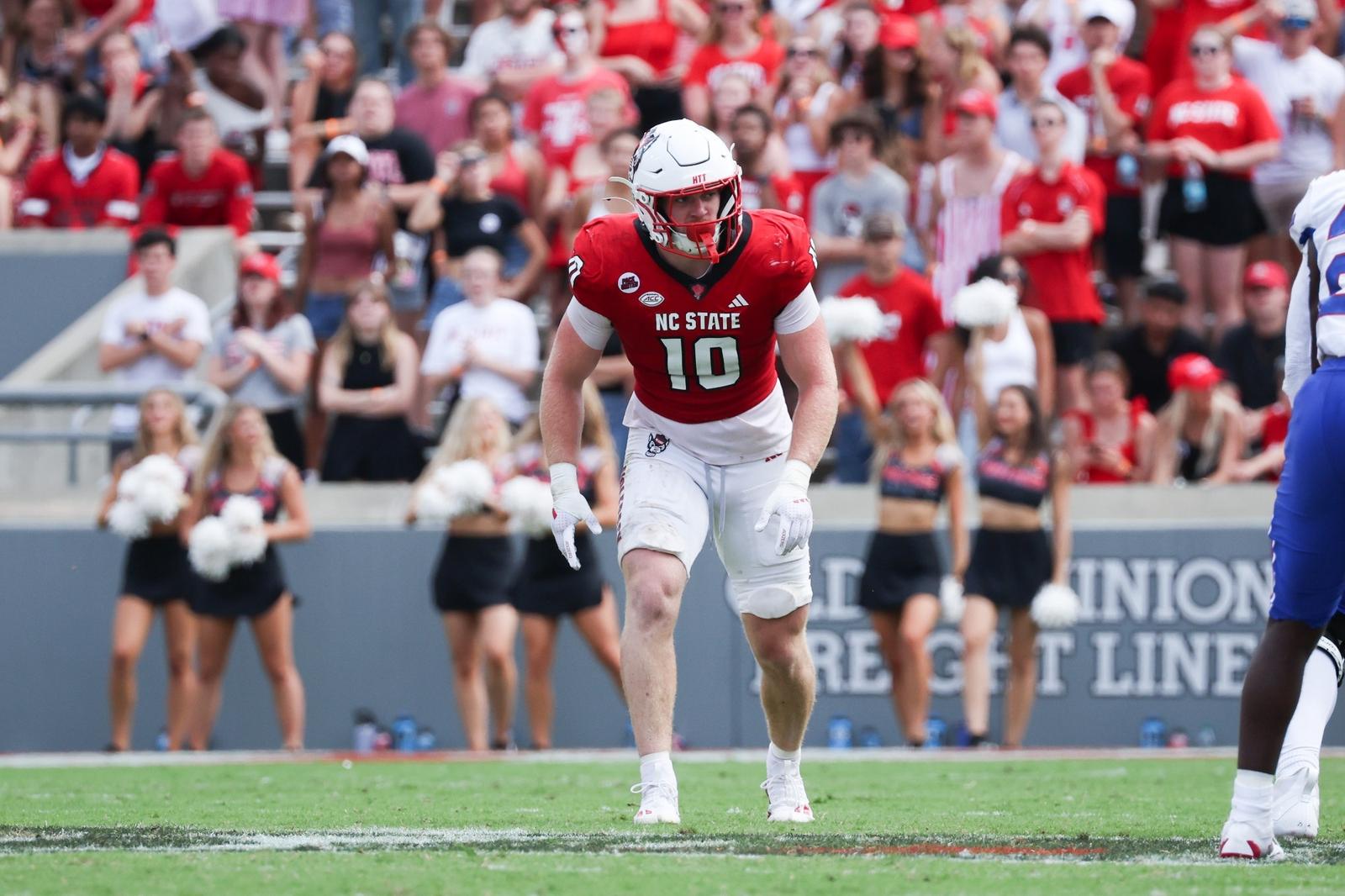
Fordham is one of 75 college football student-athletes from 51 different schools currently under consideration for the 2025 Comeback Player of the Year Award.
Before being sidelined, Fordham was the team’s leading tackler. In the Wolfpack’s win over NIU, he posted a career-high with 14 stops and also played a career-high 74 snaps in that victory.
Overall, Fordham has appeared in 35 games for the Wolfpack, totaling 110 tackles, including eight tackles for a loss and two sacks, going into 2025.
Since 2018, the award has recognized college football student-athletes for overcoming injury, illness, or other circumstances. At the conclusion of each season, in a vote by a panel of college football writers, editors, and sports information directors, three college football student-athletes are honored as Comeback Player of the Year Award winners at the Vrbo Fiesta Bowl.
Fordham suffered an isolated left ACL injury in practice last season, just before the game against Syracuse, after a pass rush drill, hyperextending his knee, which sidelined him for the rest of the season.
In the nine months it took Fordham to recover, he focused on regaining his range of motion and strength. What can be a long, tedious recovery, Fordham focused on getting back on the field and worked hard to get back to full strength. The hard work paid off as he reported to football activities in early July and has participated in all of the football camp and will be ready for week one against ECU.
Grayson McCall, Savion Jackson, and Payton Wilson are previous Pack players also to be named to the Comeback Player Award Watch List.
NIL
Dallas startup ‘gamifies’ money pledges to NCAA football teams
When the first college football games kick off later this month, fans will have a new way to support their teams — through tax-deductible, “gamified” donations. A new mobile app by Dallas-based company Sportsmo will let users see play-by-play updates during a game, and can let them make donations for positive plays. Fans can also […]

When the first college football games kick off later this month, fans will have a new way to support their teams — through tax-deductible, “gamified” donations.
A new mobile app by Dallas-based company Sportsmo will let users see play-by-play updates during a game, and can let them make donations for positive plays.
Fans can also make pledges ahead of a game — a $5 donation if the team scores more than 18 points, for example.
“It’s a fun and social new way to enjoy a game with your friends,” said founder and CEO Chaitan Fahnestock.
At launch, the app only includes football games — the upcoming season will be a test run of sorts — but Fahnestock said it plans to include other NCAA sports like basketball, baseball and softball in the future.
According to Michael Atwell of Allata, which develops the app, another key feature will allow users to create groups akin to a fantasy football league, where they can see and engage with live donations from family and friends as they watch a game together.
“Hopefully it’s a very sporty and fun peer pressure that comes along with that,” Fahnestock said.
The company was structured as a nonprofit, which allows Sportsmo to funnel the majority of donations toward the schools, earmarked for their athletics departments. Institutions that partner with the company to market the app will receive up to 87% of the donations, while nonpartners will get 77%.
Sportsmo launches as college football teams gear up for a competitive season, in the wake of a landmark legal decision regarding student-athletes’ name, image and likeness (NIL) that allows them to reap the financial benefits of being college players.
In June, a federal judge ruled that schools may now pay their athletes directly for the first time, in addition to scholarships and other benefits. In the first year after the decision, each school can share up to about $20.5 million with its players.
Since then, the University of Tennessee has agreed to a 10-year contract with apparel maker Adidas, which the school said will offer “unprecedented NIL opportunities” to its student-athletes. The University of Kansas has received a historic $300 million donation to bolster its athletics.
In North Texas, student-athletes at Texas Tech are set to make $55 million from revenue sharing and NIL deals in the upcoming season.
The new rule will put more financial pressure on colleges, especially those without deep pockets, to remain competitive in athletics, Fahnestock said. Sportsmo aims to create a new fundraising path for fans to support their school’s teams.
“We created Sportsmo so fans can play an active role in helping schools remain competitive on and off the field in this NIL era — not just by cheering, but by directly funding their teams in real time,” he said.
Fahnestock, whose background is in consulting, said he started planning the product in January 2024. He then decided to self-fund the project after conversations with friends, coaches, athletics directors and attorneys in the NIL field.
“While I saw companies out there raising money that was NIL-related, I didn’t see any that were super novel, and I didn’t see any that were super scalable in the way that we designed Sportsmo,” Fahenstock said.
“It’s still very unique in this space and, I think, something others would like to emulate once they see the magic.”
NIL
College football’s most important position units for the 2025 season
With game week upon us, it’s time for the final sprint toward the 2025 college football season. Some key position units will become especially important throughout the year, and Josh Pate shared which ones will be most paramount on Josh Pate’s College Football Show. Contending teams worked to overhaul their roster this offseason through both […]

With game week upon us, it’s time for the final sprint toward the 2025 college football season. Some key position units will become especially important throughout the year, and Josh Pate shared which ones will be most paramount on Josh Pate’s College Football Show.
Contending teams worked to overhaul their roster this offseason through both high school recruiting and transfer portal. Others, such as LSU, have some returning talent back that will look to take a leap forward and make an impact.
As teams look to make a run toward a national title, some weaknesses might have to turn into strengths. Here are the most important position units in college football for the 2025 season.
LSU – Running back
Amid an up-and-down 2024 season, LSU’s running game especially struggled. The Tigers ranked last in the SEC in rushing offense with 116.3 yards per game – which also sat at No. 107 in the nation – and adds to the pressure on the unit to perform this year.
Caden Durham is in the spotlight after a standout freshman year, totaling 753 yards and six touchdowns. In fact, an improved rushing attack could make for a more balanced LSU offense, and Josh Pate said that could be the key to helping the Tigers cement themselves as a bona fide contender in 2025.
Penn State – Wide receiver
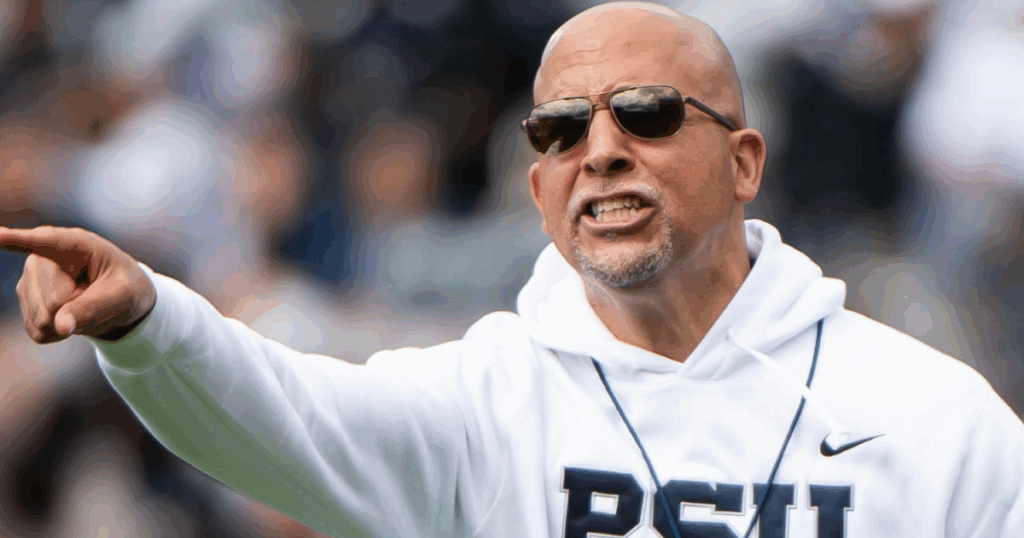
While speaking with On3’s Pete Nakos this offseason, Drew Allar praised the Penn State wide receiver room and the amount of talent. The Nittany Lions hit the transfer portal hard to overhaul the room, headlined by Syracuse transfer Trebor Pena.
If the Penn State wide receiver room improves from last year, the Nittany Lions will solidify their case to be a title contender. The key will be winning 50/50 balls, and Josh Pate said he was “encouraged” by what he saw in practice this week, but the key will be to do it in a game setting.
Auburn – Quarterback
At Auburn, all eyes are on the quarterback position. The Tigers notably landed Jackson Arnold out of the portal, but his arrival comes after questions under center to start Hugh Freeze’s tenure, and they grew louder after the idea floated around possibly playing three quarterbacks.
Auburn’s passing offense ranked middle-of-the-pack in the SEC in 2024 with 263.9 yards per game, but the Tigers struggled with turnovers and ball control. Arnold will be in the spotlight when evaluating the offense on The Plains, even with the amount of talent Josh Pate sees on the roster.
Georgia – Offensive line
The Georgia defense is getting the headlines this year, but Josh Pate pointed out the amount of turnover on the offensive line. Only one returning player has more than five starts to his name as a fresh unit gets ready to protect Gunner Stockton.
UGA is all-in on development on the offensive line, which is why the program didn’t venture into the transfer portal, according to Pate. If the Bulldogs have a strong front to protect Stockton, they could make plenty of noise in the national title race.
Ohio State – Defensive line
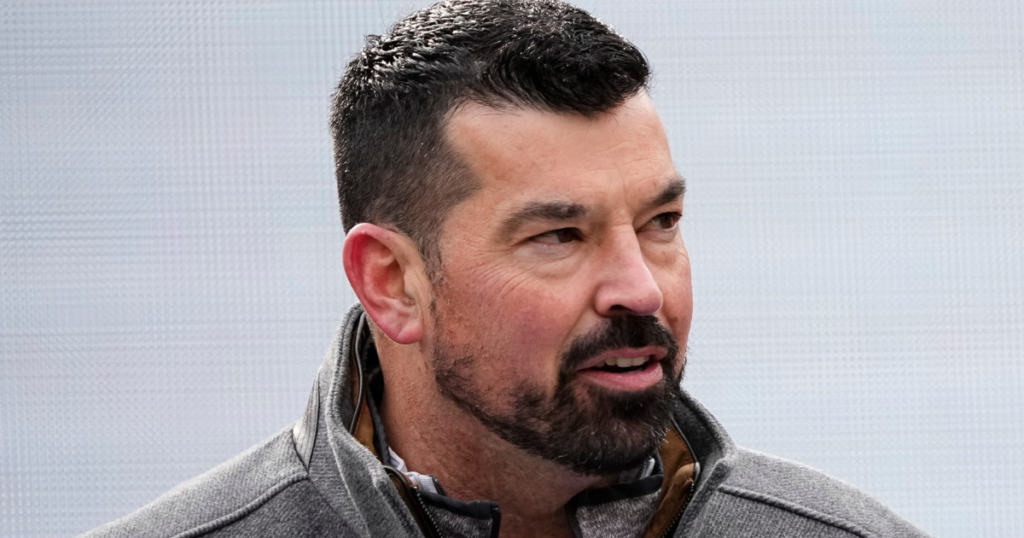
As Ohio State gets ready to start its title defense, the Buckeyes’ defense will take on a new look with Matt Patricia as coordinator. But the defensive line will also be important with so many key departures.
Ohio State notably lost J.T. Tuimoloau, Tyleik Williams, Jack Sawyer and Ty Hamilton to a historic NFL Draft class. That means it’s basically an entire unit, and the group faces a tall task in Week 1 as the Buckeyes take on Texas in the season opener.
Miami – Secondary
In 2024, Miami’s defense ranked second in the ACC with 327.2 yards allowed per game. But there were questions in the secondary, adding to the pressure on that group entering 2025.
Hurricanes staffers are excited about the new-look defensive backfield, Josh Pate said Tuesday night. If that unit can improve at all, Miami could avoid last year’s absence from the ACC Championship and be in position for a potential title run.
Florida – Linebacker
The Florida linebacker room does not include a senior this year. But Josh Pate said the young group is creating excitement because of the level of talent, even despite the fact they haven’t necessarily proven themselves quite yet since they’re so young.
The Gators are generating plenty of buzz this year as DJ Lagway gets ready to enter his second season with the program. But the defense will be especially important after ranking 15th in the SEC a year ago.
As the 2025 season draws closer, some position groups will help make teams contenders while others might turn into weaknesses and impact those title quests. For these teams, though, there’s reason for excitement as training camp begins to wind down.
NIL
Black
by Tony O. Lawson Black-owned sports agencies are helping shape the future of athlete representation. They’re negotiating record-breaking deals, advocating for players’ rights, and building firms that compete with the industry’s biggest names. In this first volume, we spotlight agency owners whose leadership is making an impact on and off the field. 1. Rich Paul – […]



by Tony O. Lawson
Black-owned sports agencies are helping shape the future of athlete representation. They’re negotiating record-breaking deals, advocating for players’ rights, and building firms that compete with the industry’s biggest names.
In this first volume, we spotlight agency owners whose leadership is making an impact on and off the field.
1. Rich Paul – Klutch Sports Group
Rich Paul founded Klutch Sports in 2012 and quickly became one of the most powerful agents in professional sports. He has redefined modern representation through deals for LeBron James, Anthony Davis, and Draymond Green. Klutch has expanded into the NFL and MLB and partnered with United Talent Agency to grow its influence across professional sports.
2. C. Lamont Smith – All Pro Sports and Entertainment (APSE)
C. Lamont Smith made history in 1987 by founding APSE, becoming one of the first Black agents in NFL representation. Over the years, he has guided multiple Pro Bowl players to lucrative contracts and endorsements. His notable clients include Eddie George (six-year, $42M contract), Jerome Bettis (six-year, $30M extension), and Trevor Pryce (seven-year, $70 M deal), along with stars like Barry Sanders and Willie Roaf.
3. Adisa Bakari – The Sports & Entertainment Group (TSEG)
Adisa Bakari leads TSEG with a focus on NFL athletes, especially those from HBCUs. He’s represented stars like Le’Veon Bell, Tyrod Taylor, Matt Forte, and Maurice Jones‑Drew. Under his leadership, TSEG represented five of the 32 HBCU players on NFL rosters in the 2016 season—more than any other agency. The firm is also known for offering comprehensive support—combining legal, financial, and lifestyle services to prepare athletes for long-term success
4. Roger Montgomery – Montgomery Sports Group
Roger Montgomery, founder of Montgomery Sports Group, transitioned from professional basketball to representation after co-founding Momentum Sports Management in 1999. He’s known for guiding undrafted talents like Maurice Evans, Desmond Mason, and Jeremy Lin into NBA success. His agency emphasizes helping athletes navigate pivotal career transitions, balancing contract negotiation with brand and personal development.
5. Cicero Leak – TLS Sports
Cicero Leak founded TLS Sports to serve athletes, coaches, and NIL talent across basketball, football, and track & field. The agency stands out for integrating public relations and branding support into its core services, helping clients build platforms beyond the game.
6. Torrel Harris – Unique Sports Management International (USMI)
Torrel Harris serves as Chairman of USMI, a boutique agency known for offering comprehensive lifestyle services—ranging from contract negotiations and financial planning to community engagement and endorsement deals with brands like Oakley and Nike. A veteran in athlete management, Harris has represented several NBA players, including his son, Tobias Harris.
7. Joby Branion – Vanguard Sports Group
Joby Branion launched Vanguard Sports in 2014 with a mission to build trust-based, long-term partnerships. He’s represented elite NFL players like Von Miller and Eric Kendricks, and the agency offers a holistic model focused on financial planning, post-career transition, and family legacy.
8. Rasheeda Liberty – Lady Lib Sports & Entertainment
Rasheeda Liberty leads Lady Lib Sports, a firm that centers the athlete’s full journey—from pre-draft development to post-retirement strategy. Known for her close-knit client relationships and focus on personal growth, she is among the few Black women leading a football agency.
9. William Sykes, Hasson Massenburg & Khalil Woodridge – Reliance Sports
Reliance Sports was launched in 2020 by William Sykes, alongside Hasson Massenburg and Khalil Woodridge. The firm offers athlete representation that prioritizes personal connections and long-term support, pledging to create ongoing value for clients both on and off the field.
Subscribe to our newsletter and stay up-to-date on the people, ideas, and businesses shaping the global Black economy.
NIL
Michigan’s NCAA sanctions signal change in future punishment
US LBM Coaches Poll: Texas Longhorns No. 1 The US LBM Coaches Poll is back for another season and Paul Myerberg breaks down the storylines to know in the preseason. Sports Pulse The NCAA cited a failure “to create a culture of compliance” in disciplining Michigan for the controversial sign-stealing scandal that occurred under former […]
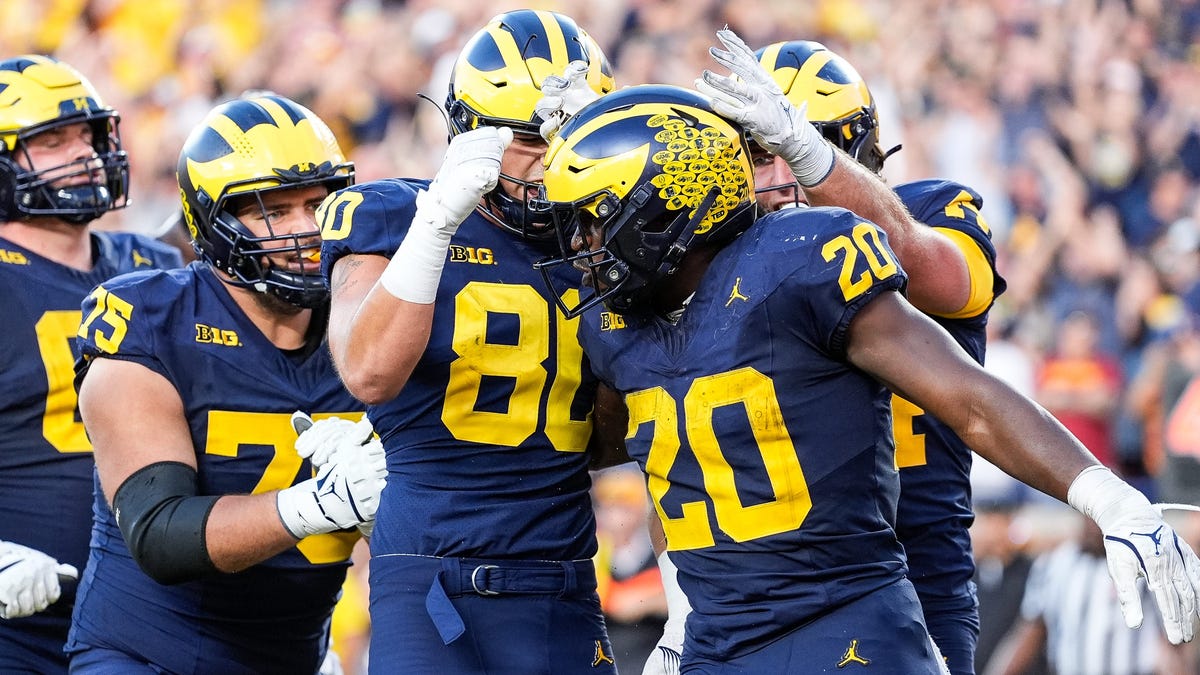

US LBM Coaches Poll: Texas Longhorns No. 1
The US LBM Coaches Poll is back for another season and Paul Myerberg breaks down the storylines to know in the preseason.
Sports Pulse
The NCAA cited a failure “to create a culture of compliance” in disciplining Michigan for the controversial sign-stealing scandal that occurred under former coach Jim Harbaugh, assigning probation, a new form of recruiting restrictions and a substantial fine tied to the program’s overall budget and future postseason revenue.
“However, the true scope and scale of the scheme — including the competitive advantage it conferred — will never be known due to individuals’ intentional destruction and withholding of materials and information,” the NCAA Division I Committee on Infractions wrote. “That said, this case and the decision that follows are limited to the information ultimately demonstrated through the NCAA enforcement staff’s investigation.”
Harbaugh, now the head coach of the Los Angeles Chargers, was given a 10-year show-cause ban by the NCAA that effectively ends his college coaching career. (This new penalty won’t even begin until 2028, when Harbaugh completes a current four-year ban stemming from another NCAA investigation.) Former off-field assistant coach Connor Stalions was handed an eight-year ban.
PATH TO PLAYOFF: Sign up for our college football newsletter
Current coach Sherrone Moore, now entering his second season, was given a two-year show-cause order and was suspended for one game in 2026, joining the self-imposed two-game suspension Moore will serve this September.
The monetary penalty features a $50,000 fine plus 10% of the program’s operating budget, an additional fine “equivalent to the anticipated loss of all postseason competition revenue sharing associated with the 2025-26 and 2026-27 football seasons” and another fine equal to 10% “of the scholarships awarded in Michigan’s football program for the 2025-26 academic year.” The total cost could be upwards of $30 million.
There is no questioning the seriousness of the NCAA investigation and resulting penalties: Michigan committed a cardinal sin in embracing an unfair competition advantage, the infractions committee found. It also did another major no-no in concealing information from investigators.
What’s missing from Michigan’s sanctions from NCAA
But the penalties assessed by the NCAA are notable for what’s missing. For two, the Wolverines were not handed a postseason ban or forced to vacate any wins — meaning that 2023 championship banner will continue to hang without any asterisks and the program will remain the winningest in Bowl Subdivision history.
That represents the latest significant deviation from the NCAA’s traditional stance on systemic rule violations, especially for repeat offenders. Historically, programs who strayed this far outside of NCAA rules were assigned three specific types of penalties.
One was a postseason ban, in many cases spanning multiple seasons. The most recent examples in the FBS are one-year bans handed to Central Florida and North Carolina in 2012 and Ohio State in 2011. The most stringent postseason penalties in FBS history were four-year bans handed to Indiana in 1960 and North Carolina State in 1959 for “improper recruiting inducements.” These don’t include the NCAA shutting down SMU’s football program in the 1980s for ineligible payments to players.
In the case of Michigan, the Committee on Infractions ruled that a postseason ban would “unfairly penalize student-athletes for the actions of coaches and staff who are no longer associated with the Michigan football program.”
The second traditional penalty would vacate wins. Last year, Arizona State was forced to vacate eight wins that occurred under former coach Herm Edwards due to violations that occurred during the COVID-19 pandemic. Tennessee had to vacate 11 wins from the 2019 and 2020 seasons for violations that came under former coach Jeremy Pruitt.
Most famously, the NCAA vacated all of Penn State’s 111 wins that occurred from 1998-2011 as part of the fallout from the Jerry Sandusky scandal. The NCAA restored those wins in a 2015 settlement with the university, restoring Joe Paterno as the winningest coach in FBS history.
The Wolverines escaped any lost wins because vacating records “is only in play when there is ineligible competition,” meaning players who are used despite being ineligible for participation, said Norman Bay, the chief hearing officer for the Committee on Infractions.
“That was not a factor present in this case, so it was not a penalty, in other words, that could be considered. And we did not impose it.”
Third, programs that committed similar recruiting violations, especially as repeat violators, have historically been levied with scholarship reductions or restrictions. That Michigan was not reflects on the rapidly shifting world of college sports related to name, image and likeness legislation that went into effect earlier this decade.
The recent House settlement will cap football roster limits to 105 athletes, though schools can keep all 105 players on scholarship; there was previously no set-in-stone cap on roster size, but schools could only have 85 players on scholarship, with the rest of the team filled out by walk-ons.
Instead of having an indefinite number of scholarships officially taken away, Michigan will face that 10% ban on football scholarships for the 2025-26 season.
“The NCAA membership has not yet determined whether roster reductions will replace scholarship reductions as a core penalty, and the panel did not want to prematurely make that decision on behalf of the membership,” the committee ruled. Rather than a straightforward reduction, the committee “converted the penalty to the financial equivalent of what would have been scholarship reductions.”
What will future NCAA sanctions look like?
That will very likely be the standard moving forward, as rule violations and the subsequent assessment of penalties will fall in large part to the College Sports Commission, which was established by the Power Four conferences in the wake of the House settlement. Led by former Major League Baseball executive and assistant U.S. attorney Bryan Seeley, the commission will supervise the approval of all NIL deals.
This makes the Michigan case a primer for how college football plans to police the new landscape. Postseason bans are out. Player-focused penalties, such as those reducing scholarships, are also out. Vacating wins also seems more like a relic of earlier attempts to curtail rule-breaking behavior among repeat offenders.
Coaches will continue to own breaches that occur under their watch, however. And as conferences and programs are chasing increased revenue streams to fulfill athletics-department obligations, penalties are more likely to include significant financial consequences.
The near future will tell whether this is an effective deterrent. If a program was willing to commit serious violations to capture a national championship — knowing that the banner would not be taken away and that wins would not be vacated — would everyone involved be willing to accept an eight-figure fine as the fallout?
If the answer is yes, the NCAA and this newly formed commission would have to reimagine the enforcement process and penalties necessary to create an equitable, fair-play environment for the top level of college football.
NIL
Arizona State AD committed to upgrading athletic facilities
The Arizona State football program has momentum like never before. It follows that department administrators are looking to build on that. The Sun Devils’ transformation into a College Football Playoff contender came at a good time. The transfer portal and NIL (name, image, likeness) have shifted the landscape, giving programs with deep pockets an advantage. […]
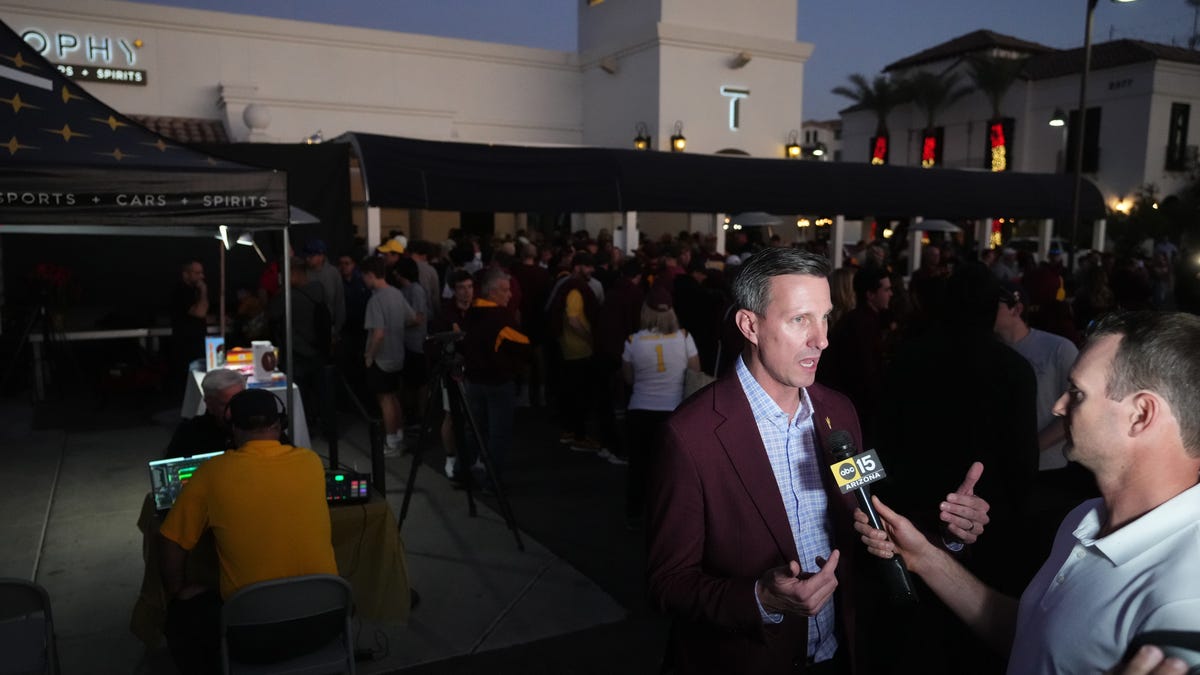
The Arizona State football program has momentum like never before. It follows that department administrators are looking to build on that.
The Sun Devils’ transformation into a College Football Playoff contender came at a good time. The transfer portal and NIL (name, image, likeness) have shifted the landscape, giving programs with deep pockets an advantage.
ASU may have been slow to the game, but the Sun Devils have made up for lost time. Money has been raised for improvements in the weight room. The university plans an indoor football practice facility that can double as a tailgating venue on game days.
Athletic director Graham Rossini and deputy athletic director Lisa Young addressed improvements during a gathering at the Stadium Club on Aug. 14.
“I don’t think you can support all your sports at a high level if you’re not starting with your investment in football,” Rossini said. “We’re 100% there. The best way to help all of our sports is to handle football first.”
The appointment of Kenny Dillingham as head coach in November 2022 started the resurgence. Six months later, the naming-rights deal for Mountain America Stadium generated $50 million for the 15-year agreement.
The athletic department has followed through on giving Dillingham the resources he needs to build the program. Rossini said that since Dillingham was hired, the overall football budget has grown 62%. The pool of money allocated for his assistant coaches has increased 60%, which is reflected in the fact that there was no turnover from last season.
Ticket revenue is up 40% and the ticket renewal rate this season is 96%. There are 7,500 new season ticket holders. Club and premium seating for 2025, including the new end zone boxes that go for $20,000, are sold out.
The Sun Devils are coming off a successful first year in the Big 12. They won the inaugural Commissioner’s Cup, highlighted by four conference championships.
“Recruits look at everything,” Rossini said. “Facilities matter, coaching staff matters, the resources schools are allocating matter. The community matters. I’m bullish with where we are now for all our sports. We can recruit high-end talent at ASU.
“We all live here for a reason. That’s a huge part of our selling point. Our institution adds to that. The commitment adds to that. Facilities do matter, now more than ever.”
Rossini said there is no timeline yet for the indoor facility as the school is still working with architects. He added the initial estimate was around $15 million, but that likely will grow to between $40 million and $50 million. About $6 million has been raised thus far.
The facility will be constructed north of Mountain America Stadium in what is now Lot 59.
“It’s too early (for a timeline), but as soon as possible,” Rossini said. “We’re studying the site, defining the scope. We have been talking to architects and our partners at ASU who get involved with capital projects, so we want to start fundraising.
“In the next 30 days or so, we’ll have the scope more clarified, and then it’s just a matter of how soon can we get funded to a threshold that allows us to start the project.”
Rossini said amenities and location will determine the final costs.
“If we’re going to do it, we want to do it right and do it well,” he said. “There is always the envy and comparison which happens in our space, but it’s what is best for us. That’s protection from the sun, moving air around and having the technology that allows us to have good walkthroughs and good practices during the week and be able to convert it into an awesome game-day experience.”
The weight room project is developing faster, with the Sol Devils Booster Club playing a pivotal role. The club raised $1.5 million in two weeks.
“We’re trying to make money however we can,” Rossini said. “Sell tickets, fundraise, core partnerships, all of it is in support of things our coaches have identified as needs. So this is something that the Sol Devils have had a great connection to the weight room when it was originally built.
“They have been instrumental in the improvements we have made at Camp T, and so it was just a byproduct of the conversation.”
And no, Rossini hasn’t forgotten about the aged Desert Financial Arena, home of the basketball teams.
Rossini didn’t divulge the details but said an announcement should be made before the start of the season. He added that “substantial” work would start next summer.
-

 Health3 weeks ago
Health3 weeks agoThe Women Driving A New Era In U.S. Ski & Snowboard
-

 NIL3 weeks ago
NIL3 weeks agoESPN Announces 'dont wait run fast' by mgk as New College Football Anthem for 2025
-

 Rec Sports2 weeks ago
Rec Sports2 weeks agoSwimming & Diving Comments on the Rules – 2025-26
-

 Rec Sports2 weeks ago
Rec Sports2 weeks agoSternberg named new youth center director | News, Sports, Jobs
-

 Technology2 weeks ago
Technology2 weeks agoAmid Sports Chaos, ‘Known’ Data and Outcomes Help Agency Win
-

 Youtube2 weeks ago
Youtube2 weeks ago🚨 BREAKING NEWS 🚨 Micah Parsons requests trade from the Dallas Cowboys | SportsCenter
-

 Motorsports4 days ago
Motorsports4 days agoNASCAR’s Bold Sponsorship Move: Anduril Steps into the Fast Lane as Defense Technology Meets Racing Dram
-

 Health1 week ago
Health1 week agoClinical psychologist discusses student
-

 College Sports3 weeks ago
College Sports3 weeks agoRep. Pugh: The Red Sand Project brings awareness to ‘very serious issue’
-

 College Sports3 weeks ago
College Sports3 weeks agoPrime Video's new Tom Brady sports documentary Built in Birmingham premieres today






























